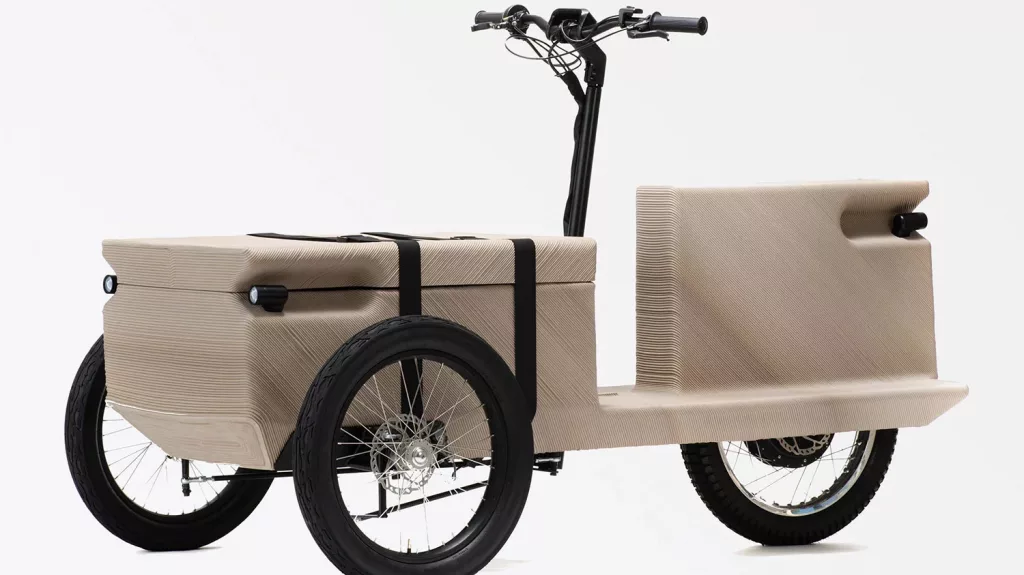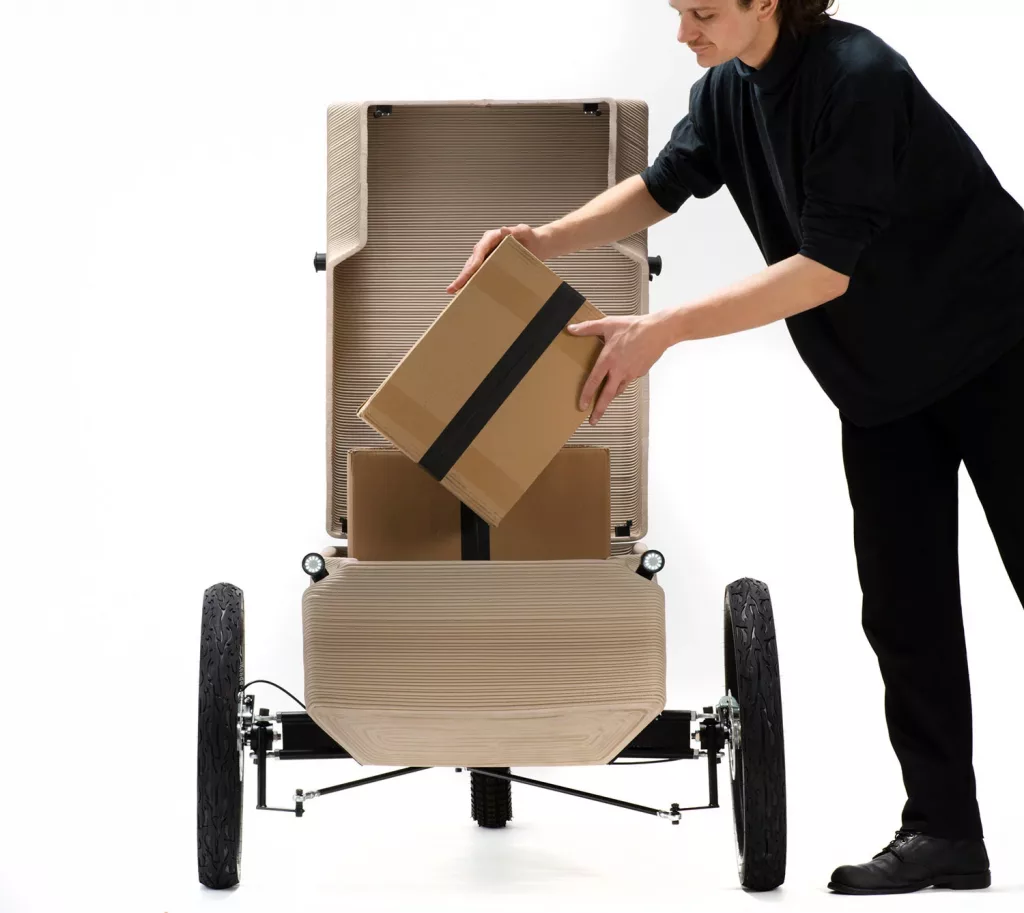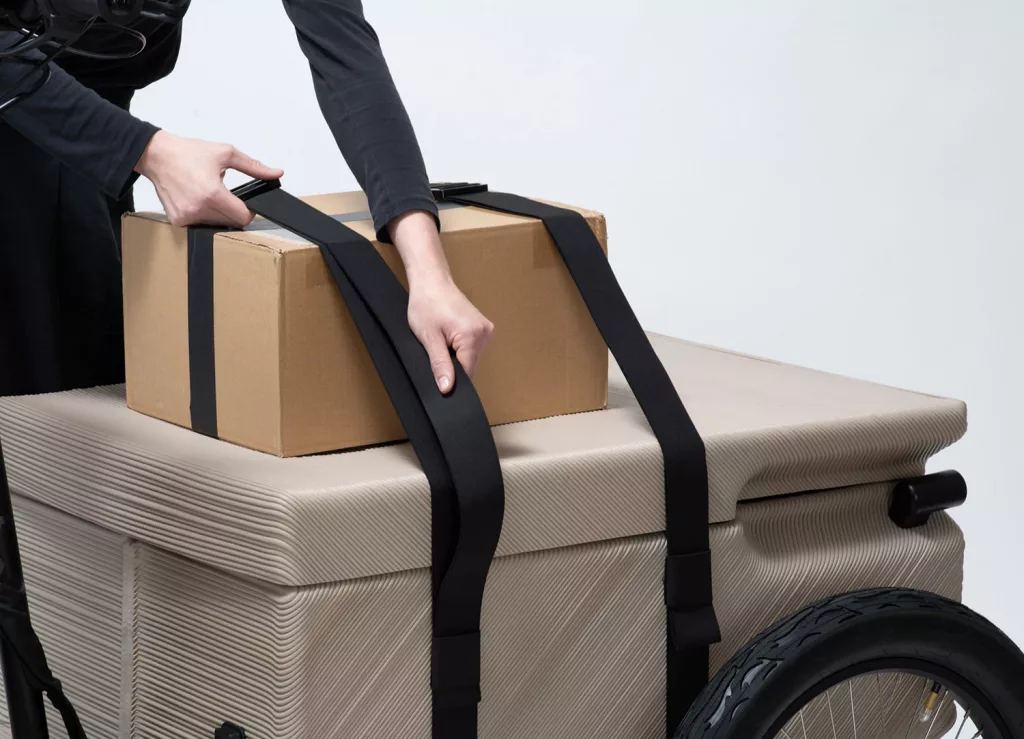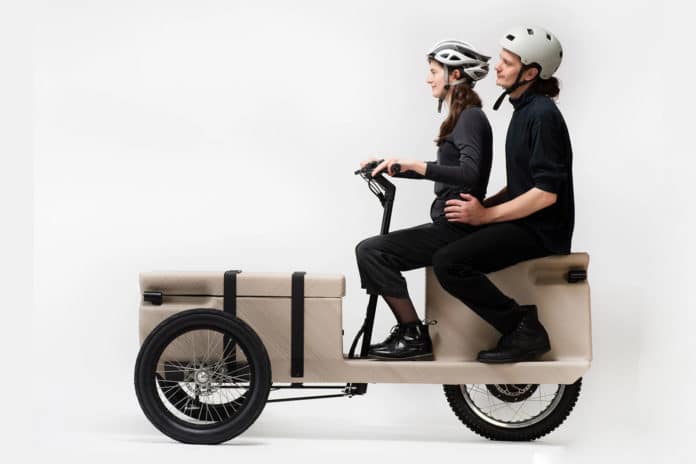Last year, the Austrian design studio EOOS established a subsidiary studio EOOS Next, which focuses on designing ecological and sustainable products. Their first big deed is an electric bike or, rather, a three-wheel ZUV – zero-emissions utility vehicle, which can be 3D-printed locally rather than being shipped worldwide. The electric tricycle is made from 70 kg of recycled plastic waste sourced from supermarkets.
The Austrian designers collaborated on the project with the Dutch studio The New Raw, which focuses on exploring new ways of recycling plastic through the use of robotic 3D printing. The idea was to develop an e-mobility concept where the chassis could be produced locally and inexpensively. Once the frame is 3D printed, the user can go to any local bike or moto workshop to bolt on a motor at its predefined position alongside the handlebars, brakes, and three wheels. This would allow individual components to be repaired and replaced close to home to extend the vehicle’s lifespan. Ultimately, the chassis could be shredded and re-printed to form another ZUV.

For their concept, The New Raw transformed 70 kg (154 lb) of recycled plastic raw material into the cargo bike’s body, seating for two, and storage box using industrial 3D-printing robots. The electric tricycle is powered via a rear-wheel hub motor without pedals or a bike chain, reducing complexity and cost.
The electric cargo trike measures 62 x 190 x 55 cm and weighs in at only 100 kg. Despite its compact design, the ZUV can carry two adults on its bench seat alongside two children or an equivalent amount of cargo in the transport box at the front. It can carry a payload of as much as 200 kg. The hope is that it could help to fulfill some of the heavy-load, short-distance journeys around the city. Cargo can also be strapped to the top of the storage box to keep contents secure and dry or removed when transporting the kids to school.

ZUV has a top speed of 25 km/h (15.5 mph) since it’s a European concept, classifying the vehicle as a bicycle, and it can ride on cycle paths – at least in theory. It can travel 50 km (31 miles) on a single battery charge, which might not be that impressive but is enough for a regular commuter.
In addition, ZUV has integrated front and rear lights and a display on the handlebars for vital stats like battery charge, speed, and progress of the trip.

Ultimately, the concept of zero emissions lies more in the production of the bicycle itself – which makes use of local fabrication and waste materials – than in its operation. Also, thanks to 3D printing, the structure can be manufactured on-site, reducing transportation and the ecological impact of its production. It remains to be seen if this concept will be implemented in other cities in Europe and more widely around the world.
The 3D-printed vehicle was commissioned for MAK’s Climate Care exhibition as part of the Vienna Biennale for Change 2021. It is unknown whether the project designers will take the design into production.
